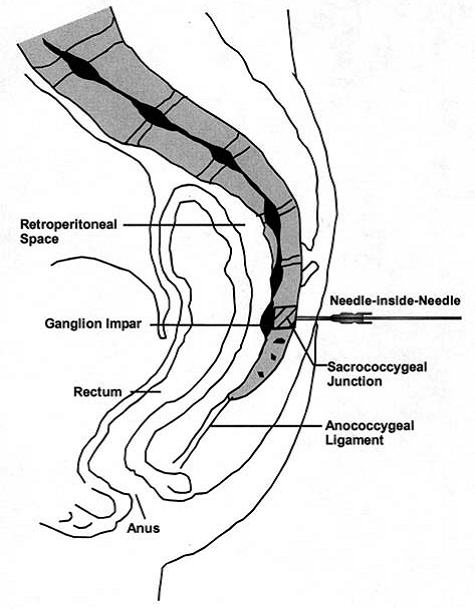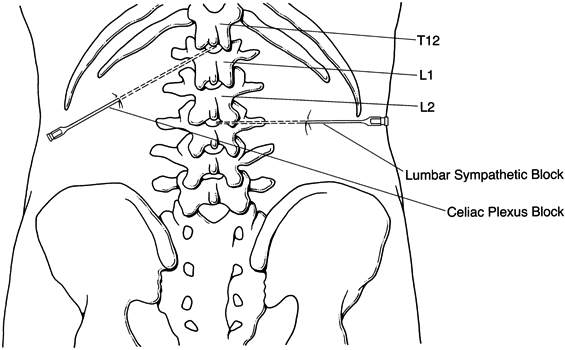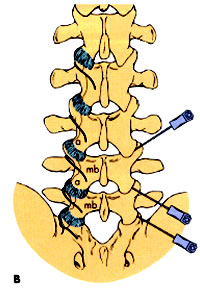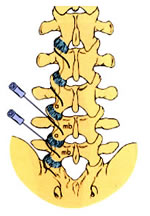Ganglion Impar: This funny name is for a cluster of nerve generally located directly in front of the tailbone. This nerve cluster receives pain signals from the tailbone, perineum, rectum, anus, urethra, and vagina. So, in general, the ganglion impar mediates pain from the pelvic organs and your tailbone.
Indications for a Ganglion Impar Block: A ganglion impar block is an excellent injection to treat pain from the tailbone. Also, it is very effective for blocking pain from the perineal and pelvic organs mentioned above, including due to cancer.
Technique: At SCCPM, lumbar sympathetic blocks are performed at the surgery center under live x-ray (fluoroscopy) for safety and accuracy. The doctor will usually order IV sedation (i.e. “twilight sleep”) as an option for your comfort. You will be checked in at the surgery center and brought into the operating suite, where you will be greeted by the doctor and registered nurse. After placing monitors (e.g. blood pressure cuff, EKG, pulse oximeter, etc) on you, the nurse will give you IV sedation (if ordered). Afterward, the area of interest will be sterilely prepped, and then the doctor will begin by “numbing” the injection site (in the tailbone region) with a local anesthetic. Afterward, with the aid of the fluoroscope, Dr. Lee will use thin needle(s) for the actual injection(s), in which a local anesthetic +/- steroid combination is injected. After appropriate monitoring, you will then be transferred to the recovery unit before going home with a family member or friend. You are encouraged to “take it easy” for the rest of the day, and to follow the post-procedure instructions ordered by Dr. Lee. You will be able to resume your normal activities the next day.
Pain Relief Response and Duration: Most patients can expect a response at the first injection. In fact, the local anesthetic will usually provide relief immediately. The steroid medication is meant to prolong and improve the relief with the local anesthetic. You may require more than one injection for long term relief, depending on the severity and duration of your pain. You and Dr. Lee will decide exactly on the number and course of your treatment. Like any medication, the local anesthetic and steroid will “wear off” with time and you may require repeat injection(s). For most patients, one or a series of injections will allow pain relief for months and even years. Unfortunately, Dr. Lee will not be able to predict your response as each patient’s disorder and severity is unique.




